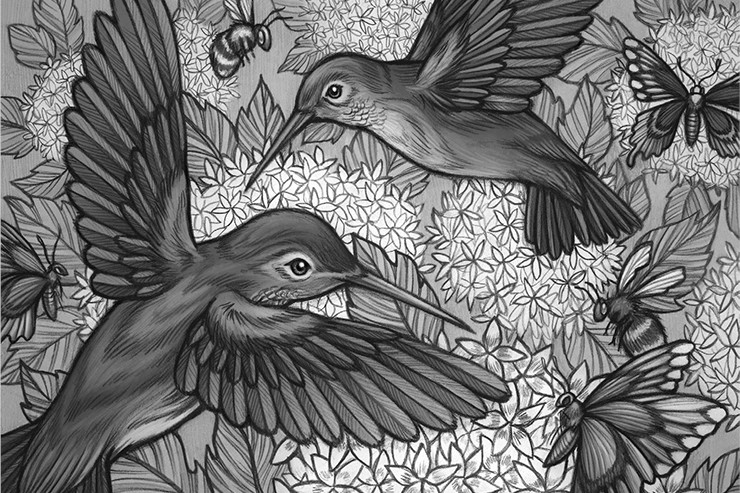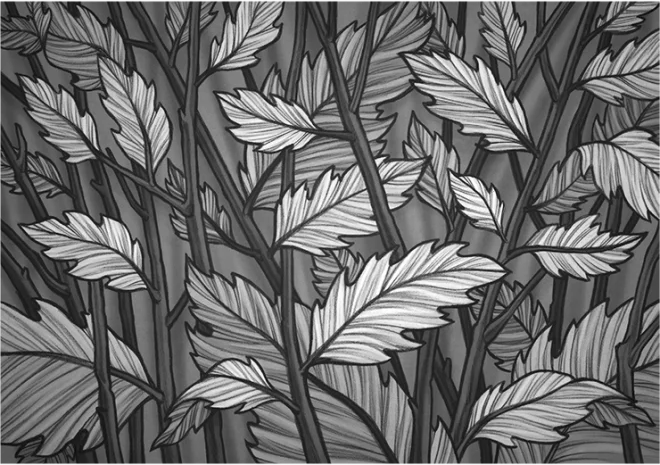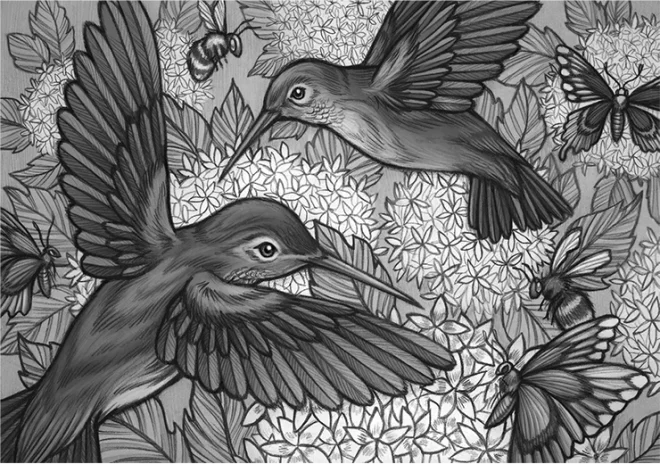
I have a plant obsession. If you’re reading this, I bet you know exactly what I mean. I’m not allowed to go into my favorite plant store more than a few times each year. And I have to leave the credit card at home if I go to buy gardening supplies. It’s just so hard to resist the idea of rooms filled with greenery: Monsteras, Spider plants, Jade, corn plants, and even some citrus. Then, of course, there’s outside.
There’s the food garden, which is its own special version of a plant obsession. I’m always interested in trying a new variety of tomato or a new vegetable I haven’t grown before. But the plant obsession doesn’t stop there. Although to be fair, I don’t think I have quite the obsession that a certain homeowner did.
In today’s story, Get To Stay, Tammie S. Haynes invites us to her recently purchased home in Houston. The previous owner, she writes, built the house and “spent his retirement growing things. As far as I can tell, he never removed any of his experiments.”
Despite her best efforts, Tammie can’t seem to get rid of all these “ugly” plants with “inelegant leaves” and “spindly stalks.” Try as she might, they keep coming back. But something changes one day, and Tammie gains an appreciation for all the unwanted plants around her home.
If You Have a Plant Obsession, We Have Some Stories We Can’t Wait To Share With You
This story comes from our archive spanning over 30 years, and includes more than 130 magazine issues of GreenPrints. Pieces like these that imbue the joy of gardening into everyday life lessons always brighten up my day, and I hope it does for you as well. Enjoy!

Get To Stay
Never name a stray plant, or else …
By Tammie S. Haynes
The house I bought here in Houston is assaulted by flowers, shrubs, and trees: a phalanx of thriving, and obstinate, plants. The man who built it, Mr. Anderson, spent his retirement growing things. As far as I can tell, he never removed any of his experiments. I can’t identify many of them—but one stands out above all the rest. It never stops spreading. From just outside the back porch it attacks the lawn, barely held back by the yard men’s mowing.

Appeasement doesn’t work with these plants. I recently added a concrete ramp to exit the back porch. I am not sure why Mr. Anderson didn’t have stairs; maybe he had wooden ones that rotted in Houston’s humidity. The work crew asked if they could remove some plants to install the ramp. I said, “Yes! Get rid of them all!” The plants are back. Not the small shrub or the misplaced flowers, but the relentless ones. The horde. The invaders.
The other half of their army is on the front side of the house. There, they expand along the sidewalk, through the flower beds parallel to the front porch, and around the corner, rubbing against the bay window in the guest room. I spent two days last spring reclaiming an area along the front sidewalk. I pulled out the invaders and planted restrained, beautiful plants. Did it work? Nope. In less than four months the determined plants had reclaimed the ground and were spiraling up toward the oak trees.

These are unattractive plants. They don’t have the cannas’ exotic flowers, the roses’ wafting aroma, the ferns’ delicate fronds, or the azaleas’ astounding pops of color. They’re not graceful with the soothing, almost lyrical, quality of the altheas. Nor are they stately with a crown of blooms in pink or red or purple like the crepe myrtle—and, in the case of one crepe myrtle near the front gate, yellow. (Mr. Anderson outdid himself to find a yellow crepe myrtle.) No, these are ugly plants. And lanky—their inelegant leaves stick awkwardly out of spindly stalks and reach up over six feet.
Except when they bloom. But even those are a lot to take in—half balls of pink blossoms larger than your fist. They remind me of those pink Hostess treats we ate as kids. You remember them? Those half domes of sticky sweetness were sugar infusions my mother didn’t encourage but my grandfather would buy for me anyway. Instead of a profusion of sugar, these are a profusion of pink blossoms, a visual onslaught of plant profundity.
But here’s the thing. The rosy buds do attract birds, bees and butterflies. They welcome them just outside the thin veil of my screened porch. Tiger swallowtail butterflies swoop close, their five- or six-inch wingspans broader than those of the tiny finches and chickadees that frequent my bird feeders. Large, fat bumblebees visit, buzzing louder than honeybees. And the most intriguing visitors of all—hummingbirds! Hummingbirds dart among the tall plants so fast that at first I questioned what I was seeing.
Hummingbirds now visit regularly. Two years ago, I set out a hummingbird feeder, but they didn’t come. Not a one. Now when the field of pink fades in late July, I hang a hummingbird feeder in that spot, and hummers come and come. One in particular zips down from the large oak in the backyard to feed a foot outside the screen, three or four feet from me and my morning coffee. All because of the homely plants.
They say love is a choice, you decide whether to love some-thing. They also say never name something you don’t want to keep. Never name a stray dog. Same with a scruff-eared tabby. Once you name it, it is yours. After the hummingbirds came, I looked up the domineering plants. They are Egyptian Star Flowers, Penta lanceolata. Mine are exponentially larger than they are supposed to be. They adapted so well to Mr. Anderson’s subtropical paradise that they morphed into Super Egyptian Stars.
There, I named them. I guess they get to stay. ❖
By Tammie S. Haynes, published originally in 2017, in GreenPrints Issue #109. Illustrated by Kate O’Hara

Have you ever “inherited” flowers or plants that weren’t quite your style? What did you end up doing?



